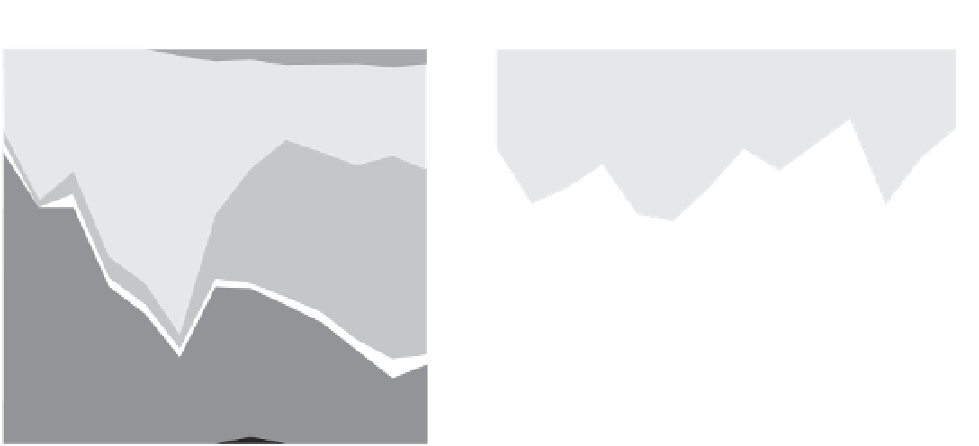Environmental Engineering Reference
In-Depth Information
Figure 14.5
Relative changes of cover percentages of ecological groups after (a) grazing, (b) haymaking and (c) sod cutting
from 1972 onwards.
the sod and allows the establishment of for example
heathland species from the soil seed bank if present
(Figure 14.5). The disadvantage of sod cutting is that
it also removes most of the soil seed bank, and this will
include any present target species. However, shallow
sod cutting of up to 10 cm can also activate the seed
bank of nontarget species. A headache for many
authorities in charge of conservation is the widespread
establishment of the common rush,
Juncus effusus
. This
species can also show up as a result of trampling by
grazing livestock. It is not a local problem for resto-
ration practicioners. Its seeds are represented in most
soil samples in old fi elds and heathlands in north-
western Europe (Bekker
et al
. 1997 ).
14.4.6
Topsoil removal
Topsoil removal (up to 50 cm in depth) implies defi ni-
tive removal of the traces and 'footprint' of former agri-
cultural history of a site by removing the long-ploughed
and heavily fertilized soil right down to the C horizon





